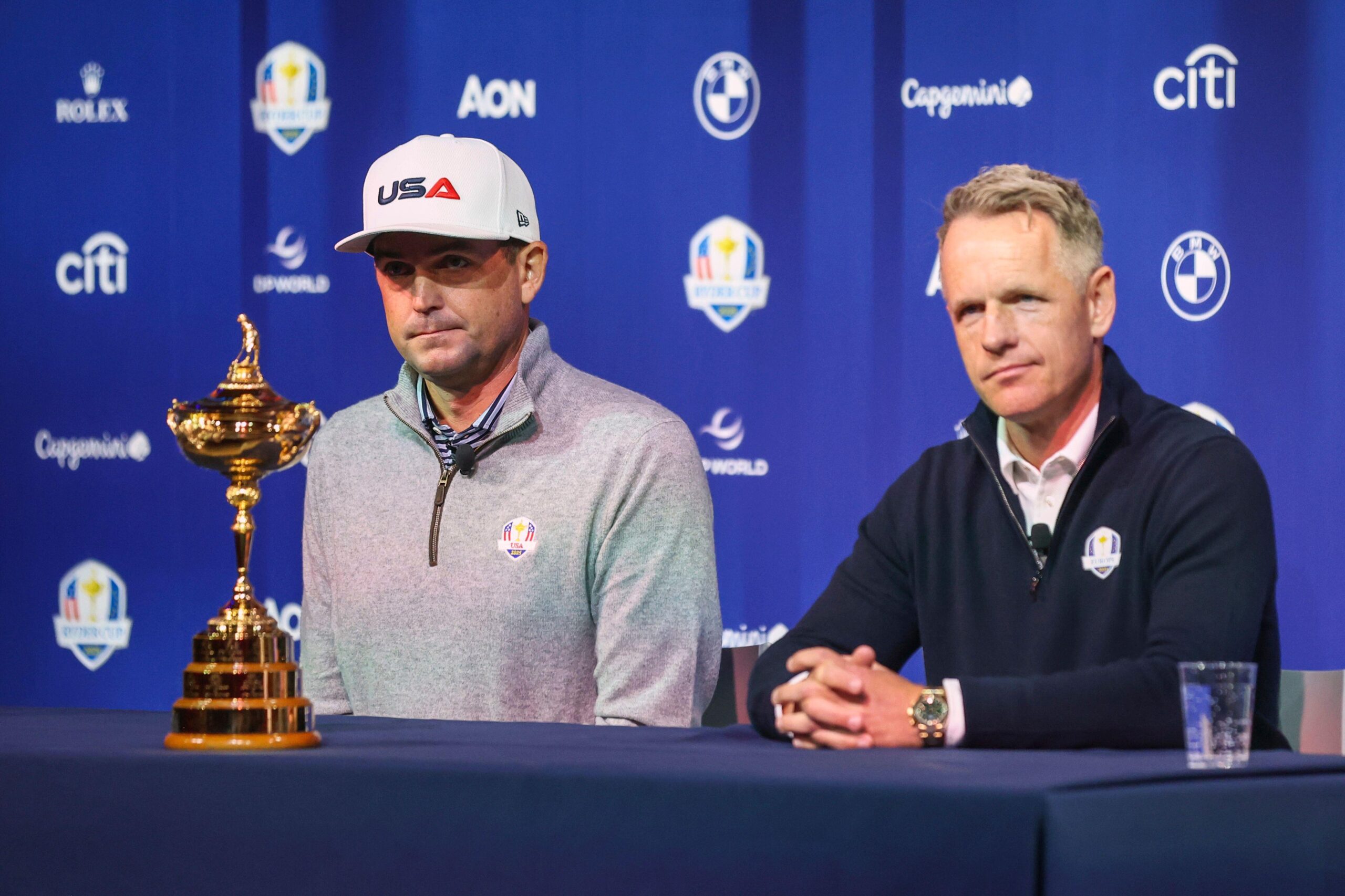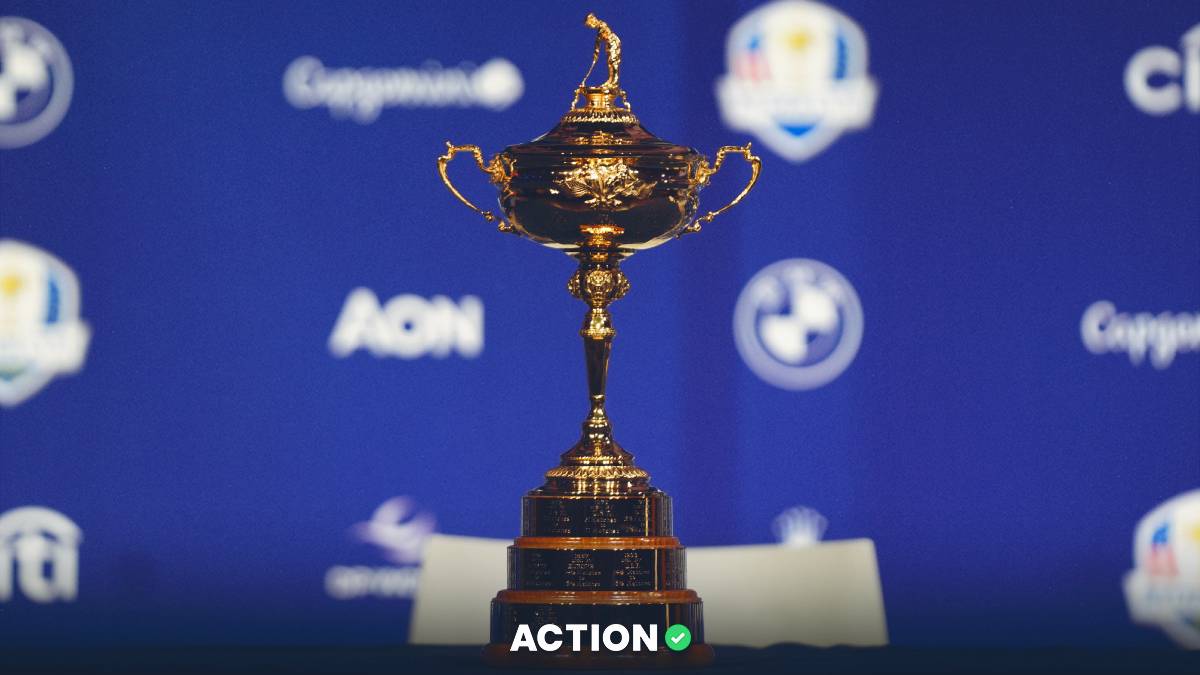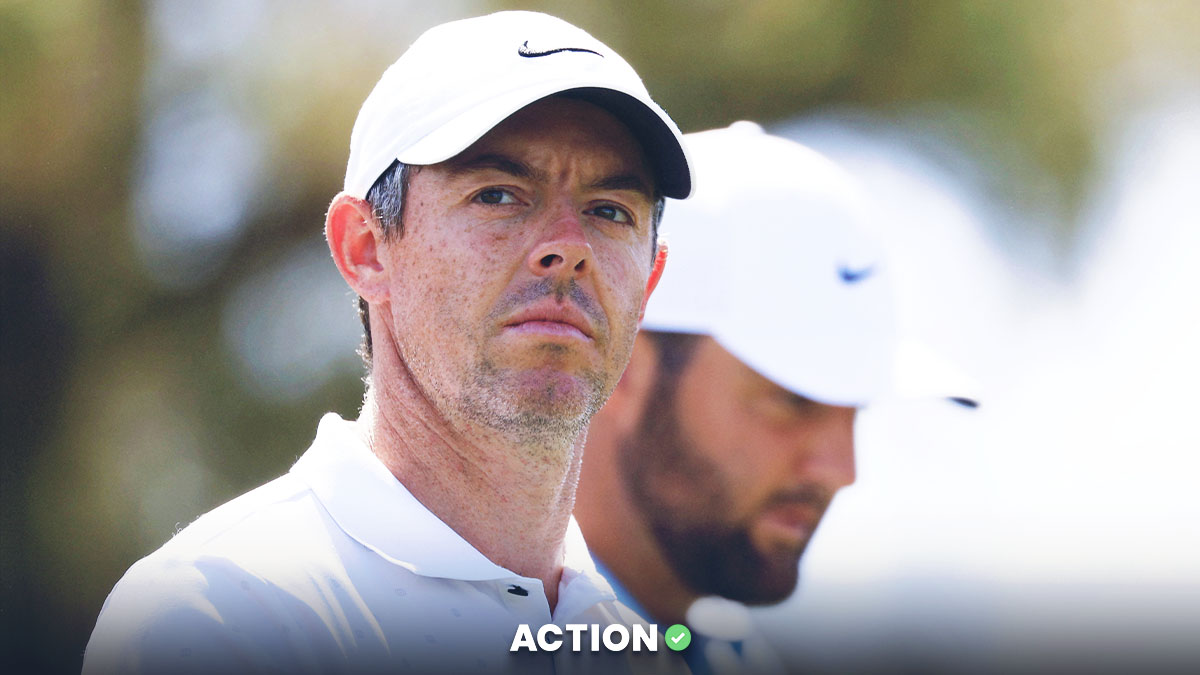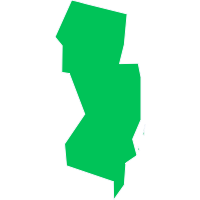Dreaming of the Ryder Cup always raises one question: where do the best American golfers actually come from? While every player brings their own story, certain states have consistently supplied the backbone of Team USA.
To find out, data experts at The Action Network ranked every US state that has sent golfers to the Ryder Cup. The rankings are based on three key factors:
- Total golfers produced – How many players each state has sent to the Ryder Cup.
- Combined Ryder Cup appearances – The total number of times players from each state have represented Team USA.
- Average professional wins per golfer – A measure of overall career success for players from each state.
These factors were blended into an Overall Talent Score (0–100) to compare states on a single scale.
America’s Ryder Cup Powerhouses: Top 10 States
A closer look at the 10 states that stand above the rest when it comes to producing Ryder Cup talent.
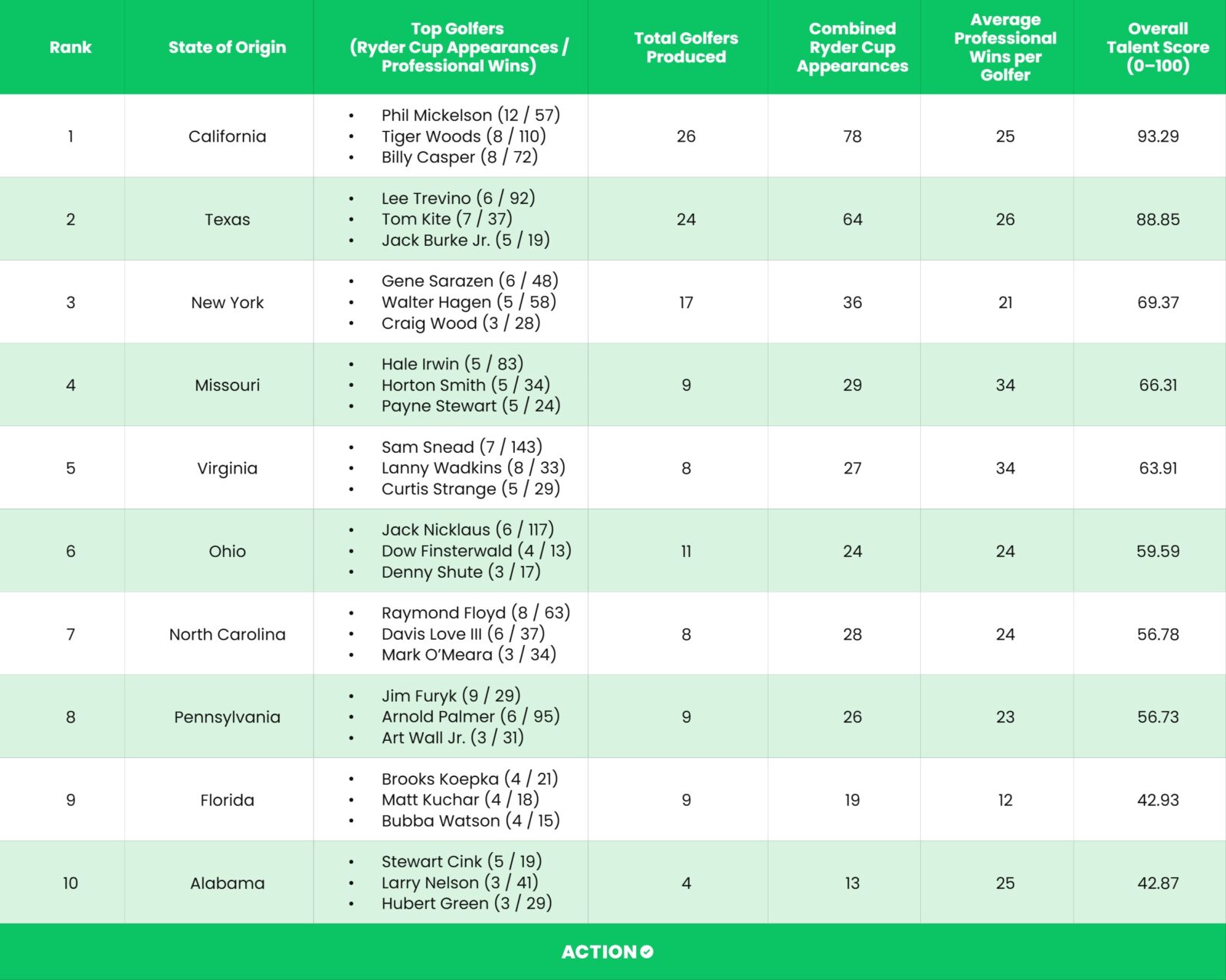
California leads the rankings, producing 26 golfers who have combined for 78 Ryder Cup appearances. With stars like Phil Mickelson, Tiger Woods, and Billy Casper averaging 25 professional wins each, the state reaches an Overall Talent Score of 93.3/100.
Texas secures second place, home to Ryder Cup icons like Lee Trevino, Tom Kite, and Jack Burke Jr. Its 24 players have totaled 64 appearances and average 26 professional wins, earning a Talent Score of 88.9/100.
New York holds third, producing 17 golfers with 36 appearances. Led by Gene Sarazen, Walter Hagen, and Craig Wood, the state averages 21 professional wins per golfer and scores 69.4/100.
Missouri and Virginia outperform expectations, with Hale Irwin, Sam Snead, and Lanny Wadkins leading the way. Both states average 34 professional wins per golfer — the highest of any in the top 10.
Ohio (59.6/100) and North Carolina (56.8/100) show consistent strength, producing legends like Jack Nicklaus and Raymond Floyd, while contributing more than 50 combined Ryder Cup appearances.
Pennsylvania (56.7/100) adds historic star power, highlighted by Arnold Palmer and Jim Furyk, with its nine players combining for 26 appearances.
- Florida and Alabama round out the top 10, producing modern names such as Brooks Koepka and Stewart Cink, but finishing with lower Talent Scores just above 42/100.
Other Notable Mentions
Louisiana (39.8/100) stands out with stars like Hal Sutton, helping the state punch above its weight in Ryder Cup history.
Georgia (39.6/100) contributes steady talent, with eight golfers combining for 12 appearances.
Connecticut (39.4/100) may not be top of mind for golf fans, but it has quietly produced six Ryder Cup players with a solid track record.
On the Other End of the Spectrum
Delaware (18.4/100) and Vermont (13.1/100) have each produced just a single Ryder Cup golfer, leaving them near the bottom of the rankings.
Utah (8.0/100) and Colorado (5.6/100) sit at the very end, with minimal appearances and fewer standout careers compared to other states.
Curious to see your state’s place in the rankings? Explore the full breakdown below.
Following the Ryder Cup is all about passion, pride, and smart picks. If you’re looking to add extra excitement to the action, explore the latest sportsbook offers with the BetMGM Bonus Code.
Methodology
To uncover which US states have produced the greatest Ryder Cup talent, The Action Network analyzed every American golfer who has competed in the event. Each state was evaluated using three main metrics:
Ryder Cup appearances (50%)
How many times have players from each state represented Team USA.
This measure carries the most weight, since consistent selection reflects both individual quality and long-term contribution to the Ryder Cup.
Total golfers produced (30%)
The number of distinct players from each state who have played in the Ryder Cup.
A higher count indicates that the state has been a steady pipeline of Ryder Cup talent across generations.
Average professional wins per golfer (20%)
The mean number of professional tournament wins per player from each state.
This metric captures overall career success, balancing Ryder Cup performance with wider achievements on the PGA Tour and beyond.
Each metric was normalized on a 0–100 scale to allow fair comparison between states of different sizes and histories. The weighted values were then combined into an Overall Talent Score (0–100), which determined the final rankings.
Additionally, for the “Top Golfers” column in the top 10 table, standout players from each state were highlighted using a blended formula that placed greater emphasis on Ryder Cup appearances (80%) and professional wins (20%).


